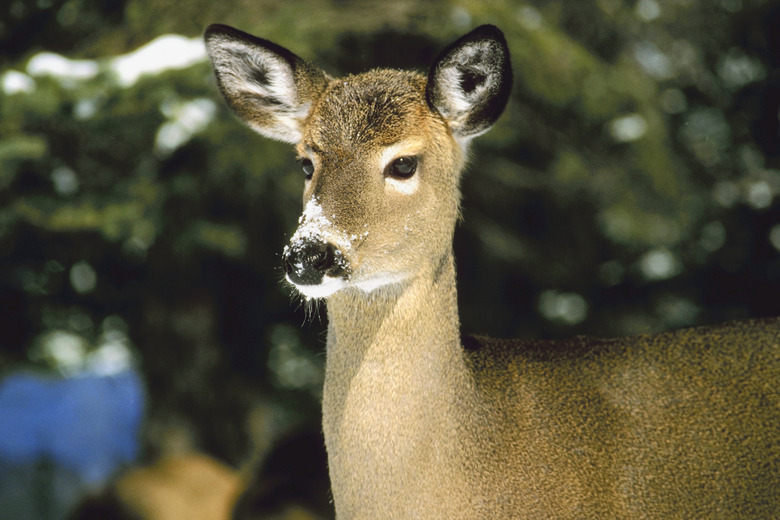Homemade Apple Deer Licks
A deer lick is a block of salt and minerals that is used to attract wild deer who come in search of a quick source of nutrients. Deer licks are indispensable to a good hunter, but there is no need to shell out your hard-earned cash to purchase one. You can make your own apple-flavored deer lick at home using simple, inexpensive ingredients.
Preparation
Preparation
Purchase or borrow a large bucket, wheelbarrow or other durable container capable of holding 10 gallons, a 3-lb. empty coffee can and a large shovel. Purchase the following materials from a feed store: one 50-lb. bags of trace minerals, one 50-lb. bag of stock salt, one 50-lb. bag of dicalcium phosphate. Also, purchase one large 18 oz. container of molasses. Purchase about 10 lbs. of apples, roughly 20 apples in total of any variety. Varieties with grainy textures that are good for applesauce would work perfect for this application.
Execution
Execution
Cut the apples into large chunks. There is no need to peel or core the apples. Boil one gallon of water in a large pot. Add the apples and stir the mixture. Simmer this mixture for one hour or until the apples are slightly soft to mushy. In your large container, place two 3-lb. coffee cans of dicalcium phosphate, two 3-lb. cans of stock salt and four 3-lb. cans of trace minerals. Stir this mixture with the end of the shovel, a broom handle or anything suitable to stir a large mixture. Pour the apple mixture into the mineral mixture and stir again thoroughly. Pour the molasses into the mixture. Add two more gallons of lukewarm water into the mixture. Stir once more very thoroughly.
Placing the Deer Lick
Placing the Deer Lick
Place your deer lick in a wooded area where you are legally allowed to dig. Make sure to choose an area that is known to be well-trafficked by deer and that is a good hunting ground. Dig a pit approximately 1 feet deep and 3 to 4 feet wide. Pour the apple-salt-mineral mixture into the hole. You also might want to place deer feeders nearby the deer lick. Mix in half of the dirt from the hole back into the pit with the deer lick mixture and incorporate thoroughly. Pat the deer lick down firm with the back of the shovel. Visit the area after a rain to check its consistency.
Cite This Article
MLA
Cato, Jeremy. "Homemade Apple Deer Licks" sciencing.com, https://www.sciencing.com/homemade-apple-deer-licks-5796561/. 24 April 2017.
APA
Cato, Jeremy. (2017, April 24). Homemade Apple Deer Licks. sciencing.com. Retrieved from https://www.sciencing.com/homemade-apple-deer-licks-5796561/
Chicago
Cato, Jeremy. Homemade Apple Deer Licks last modified March 24, 2022. https://www.sciencing.com/homemade-apple-deer-licks-5796561/
